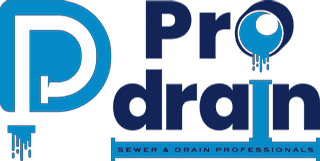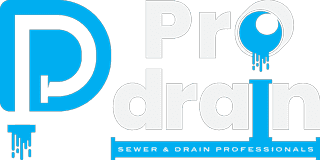You’re washing your hands and the water begins to fill the basin of your sink. You’re in the shower and wastewater is flooding by your feet. You're washing your dinner dishes and the sink begins to flood. You’re using the restroom and your toilet refuses to flush. If you relate to any of these, you have serious drain clogs that need to be addressed.
Your drain clogs may be due to normal pipe wear and tear, especially if you live in a more historical home; however, in most cases, your drain is clogged due to user error, as most people don’t have a single clue what can and cannot go down a drain. If the wrong items consistently make their way down your drain, rudimentary drain cleanings and clog removals will not get the job done. Your drains will need hydrojetting.
We are here to teach you how to use your drain responsibly, and educate you on hydrojetting.
Common Drain Clogs In Your Kitchen
Isn’t the kitchen garbage disposal meant for food to be washed down it? Well, the answer is yes, but to an extent.
Here is a list of foods to never put down your kitchen sink:
Anything fibrous
Coffee grounds
Eggshells
Fish, meat, or chicken bones
Fruit or vegetable pit
Grease, oil, and fat.
Starches that will expand, such as rice or pasta
Vegetables and fruit peels
When masses of food are shoved down your disposal, they cling to grease, fat, and oil, and the water won’t be able to pass through. Your drain will fail to eliminate your wastewater, causing your kitchen sink to flood. This will require professional attention, as you should never stick your own hand down your garbage disposal. There are sharp blades that can seriously injure you. If your clogs are deep within your pipes, hydrojetting is the best solution.
To prevent a clogged kitchen sink in the future, throw food scraps into the trash instead of washing it down your drain.
Common Drain Clogs In Your Bathroom Sink
Believe it or not, toothpaste is actually a common clog-causing product. The toothpaste residue left in your pipes after brushing your teeth can build-up and form into large obstructions. Water will be unable to pass through, leaving your bathroom sink filled with water.
Hair is also a famous drain foe. Try to shave and brush your hair away from your sink. When hair makes its way down your drain, it clumps together and blocks the free flow of water coming down your pipes. You can purchase drain covers to hinder your hair from going down your drain; however, this is not a foolproof method. The best way to keep your bathroom sinks functioning fluidly is routine drain maintenance. Hair will inevitably fall down your drain, but hydrojetting can keep your drains running smoothly without the hassle of trying to catch all of your hair before washing it down the drain.
Common Drain Clogs In Your Toilet
I think we can all agree, this might be the worst clog of them all. There are numerous potential causes of toilet clogs. From feminine products to foreign objects, from dental floss to baby wipes, and from too much toilet paper to hair (once again), flushing anything apart from waste and an appropriate amount of toilet paper may result in blockages. These items are unable to break down within your drain pipes and will cause consecutive clogs.
Common Drain Clogs In Your Shower
Can you guess the main clog-causing culprit in your shower? You’re right, it’s hair yet again. If shower water is forming puddles at your feet, contact a plumber to come to remove your clog immediately, as hair can journey through your pipes quickly and cause blockages in your other drain lines. This will set off a clog domino effect, resulting in multiple drains issues simultaneously.
In the future, do not brush your hair in the shower. It increases the amount of hair you shed, and therefore the amount of hair going down your drain. Instead, brush your hair before taking a shower.
How Hydrojetting Works
Picture a garden hose. It is long, malleable, and has a nozzle at the end of it, where water spews out. A drain jetter is similar. A pressurized water tank supplies water to a hose-like tool. The water pressure is adjustable, so it can remove a wide range of clogs from grease to cement.
It is a two-step process. Once the initial drain jetter restores water flow within the affected pipe, a second nozzle is placed through the pipe to flush out any debris left in the pipe. This further protects your pipes from future clogs by removing any possible sticky, clog-grabbing substances that may be lurking in your pipes.
After a hydrojetting session, your drains will be flowing better than ever. Drain jetting is the most effective and thorough way to address a clog. Conventional drain cleaning practices simply cannot keep up with the power of hydrojetting.
Don’t wait until your drain lines are severely clogged to contact Pro Drain, Inc., at (855) 463-2457, to set your hydrojetting appointment.


.1912310626550.png)